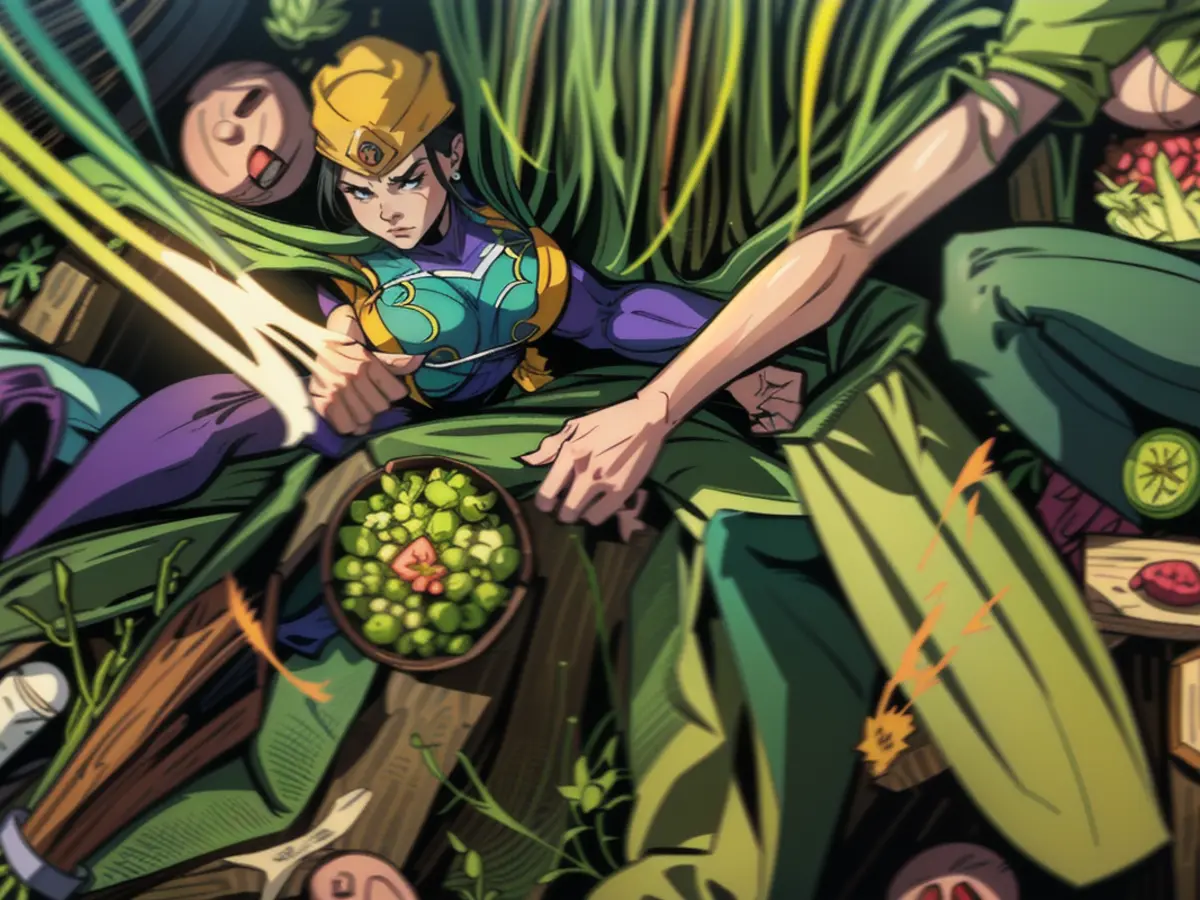Elevate your pasta dishes with these 4 key ingredients.
Different from spaghetti, sauces easily slide off the spaghetti. Also, some tubes fail to hold sauces well. However, according to Pashman, the engineered noodle stands out due to its ability to maximize three key factors in noodles - forkability, sauceability, and toothsinkability.
This short, curved pasta, cascatelli, possesses two parallel ridges on one side. A small well for sauce sits between them. The initial batch of 3,700 boxes of cascatelli quickly sold out, leaving many interested customers empty-handed. In fact, its popularity extended beyond listeners of Pashman's podcast, "The Sporkful." A renowned publication named it one of the top 100 inventions in 2021.
As more people acquired cascatelli, its usability expanded, leading Pashman to notice that non-creative, conventional sauces were the most common choices. Tomato, meat, mac & cheese, pesto... their options were limited.
Rather than just wishing for more diverse sauces, Pashman assembled a team of talented recipe developers and culinary experts to create a unique cookbook. Their goal: To persuade home chefs to explore a vast range of alternatives for their noodles, whether cascatelli or not.
The adventure began with a journey to Italy. Pashman was surprised to learn pasta was only Italy's national food for roughly a century. Iconic dishes, like carbonara, assumed to be ancient Roman favorites, were introduced after the 1940s.
This revelation reduced pressure to adhere to traditional Italian culinary practices.
"Anything's Pastable: 81 Inventive Pasta Recipes for Sauce Lovers" aims to introduce unconventional ingredients and cuisines Pashman admires. Like many food traditions, pasta is continually evolving. Pashman aspires to showcase this through his March 2024 cookbook, empowering people to break free from traditional boundaries.
"I hope that people realize there's so much more they can and should be putting on pasta," Pashman said. "It's like a blank canvas ready for any form of flavorful, tasty goodness."
Some of the book's recipes, like Shakshuka and Shells, Kimchi Carbonara, and Spaghettoni Alla Tadka, integrate ingredients considered exotic or non-Italian by the average cookbook reader. He considers this intentional.
"I hope this book will normalize some ingredients and cuisines that I've been inspired by," Pashman added. "This alternative approach to pasta is a natural extension of our country's growth in diversity. Broader food cultures are merging into the mainstream, and these are global and American recipes."
Here are four ways to intensify your pasta dishes:
- Chili crisp: Made from oil, chili peppers, and flavorings like soy sauce, fried garlic, or fried shallots, this spicy condiment adds depth and texture to any meal. He strongly advocates using it with cheese, and even ice cream. Look for Lao Gan Ma, Fly by Jing, KariKari, or S&B Chili Oil with Crunchy Garlic.
- Za'atar: This Middle Eastern spice mixture is fantastic on roasted chicken, focaccia, or fried eggs. It plays a role in recipes like Shakshuka and Shells, as well as one of the pasta pizzas which sports a crust made from pasta instead of dough. "It's in our Shakshuka and Shells – and one of the pasta pizzas, which is a pizza with a crust made of pasta instead of dough," Pashman mentioned. "The toppings are inspired by what we add to one of our go-to pizza toppings in our house: artichoke, feta, and za'atar."
- Preserved lemons: Often used in different cooking styles, this savory Middle Eastern flavoring enhances dishes with a tangy, slightly sweet, and acidic taste.
Remember, the options are endless with creativity and these four ingredients!
Preserving lemons and their zests play a significant role in this unique book. With a strong appreciation for them, Pashman revealed he even has lemon wallpaper in his kitchen. Preserved lemons are notable for their funky, sour, savory, salty, and tangy taste. Pashman often swaps them for regular lemons in dishes like Crispy Gnocchi Salad with Preserved Lemon-Tomato Dressing and Cavatelli with Roasted Artichokes and Preserved Lemon.
Arriving from North Africa, these salted, seasoned lemons are a must-have. They come in jars in most supermarkets and specialty shops. Apart from recipes, preserved lemons add zest to salads, tagines, and yogurt sauces.
Adding a new twist to pasta, Pashman explores different textures. While many noodle and rice dishes feature diverse textures, American pasta dishes typically lack them, he mentioned. "Once you start introducing varying textures into your pasta dishes, it's tough to revert to the same old stuff," he commented.
To complement pasta with an interesting crunch, he elaborated on pangrattatos - a mixture of toasted breadcrumbs and seasonings. For a distinct twist, Pashman suggests trying it with crushed Ritz Crackers. Spread Ritz Cracker Pangrattato on top of Cauliflower and Beer Cheese Mac or any salad with ranch or Caesar dressing. Simply melt a little butter, add minced fresh chives, and sprinkle over Ritz Crackers before mixing.
Dan Pashman's "Larb-ish" Cascatelli Pasta
Serves 4-6 |Total time: 45 minutes
In this recipe, spicy Thai chili flakes and lime juice are bloomed in hot oil, forming characteristic flavors of the popular Thai dish, larb. Cascatelli pasta works well as it holds bits of meat well, Pashman said.
Get Thai chili flakes online or at Asian markets, and some supermarkets. Though larb should be spicy, adjust the number of chili flakes depending on your preference.

You have two options for the toasted rice powder: buy it prepackaged, or make it yourself by toasting rice with oil. Choose between 3 tablespoons of prepacked toasted rice powder and skip Step 1 if you decide to buy it. Toasted rice powder can be found online or in Asian grocery stores as khao khua (Thai) or bột thính gạo or thinh (Vietnamese).
Ingredients
● 1 teaspoon plus 1⁄4 cup canola or other neutral oil
● 1⁄4 cup uncooked glutinous or jasmine rice
● 2 tablespoons kosher salt
● 3 medium shallots, sliced into very thin rings
● 1⁄2 cup chopped fresh cilantro leaves and tender stems, divided
● 1⁄2 cup chopped fresh mint leaves, divided
● 2 scallions, sliced
● 1 to 3 tablespoons Thai chili flakes
● 2 tablespoons brown sugar
● 1⁄4 cup fish sauce
● 1⁄4 cup freshly squeezed lime juice, along with lime wedges for serving
● 1 pound ground pork, turkey, or chicken
● 1 pound cascatelli pasta (or radiatore or creste di gallo)
Instruction:
- To make toasted rice powder, heat 1 teaspoon oil in a large skillet on medium heat. Put rice into the skillet and roast, stirring and shaking the pan frequently, until it's deeply golden brown (approximately 4-6 minutes). Transfer the rice to a spice grinder, reserving the skillet, and pulse into a powder. (Rice can also be crushed in a mortar and pestle but will require time and effort to achieve the desired texture; it should not contain large pieces or entire grains.)
- In a large pot, bring 4 quarts of water and salt to a boil.
- In a large, heatproof dish, combine the shallots, 1⁄4 cup cilantro, 1⁄4 cup mint, scallions, chili flakes, and sugar. Heat the remaining 1⁄4 cup oil in the reserved skillet over high heat until just starting to smoke. (This may take several minutes based on your cooktop; you want the oil very hot.) Carefully pour the hot oil over the shallot-herb mixture (it should sizzle). Reserve the skillet. Add fish sauce and lime juice to the dish and stir until the sugar dissolves.
To cook the meat, take the reserved skillet and put in the meat along with 1/4 cup water. Cook with medium-high heat while stirring occasionally and breaking up the meat until it's thoroughly cooked but not browned, which takes around 6 to 8 minutes. Make sure to add more water if it starts to brown (2 tablespoons at a time). Use a slotted spoon to transfer the cooked meat into the bowl with the shallot-herb mixture, making sure to remove any liquid in the pan. Mix in another 1/4 cup each of cilantro and mint. Note that if you're preparing beforehand, wait with adding the leftover cilantro and mint until you're set to proceed with the recipe.
Next up, add the pasta to the boiling water and cook until it's just al dente according to the package instructions. Drain the pasta, getting rid of any excess water, and place it back in the pot. Then, add the meat mixture to the pasta, including everything in the bowl as well as three-quarters of the rice powder. Stir well.
Transfer the cooked pasta to a serving dish or individual bowls, sprinkle the remaining rice powder, and serve with lime wedges.


Read also:
- No food or coffee for three days, just juice, juice, juice instead: a field report
- How to get rid of the flu if you have caught it
- Doctors warn of penis fractures and other injuries during the Christmas season
- Corona or flu epidemic? These pathogens are making us cough and sniffle right now
Source: edition.cnn.com








